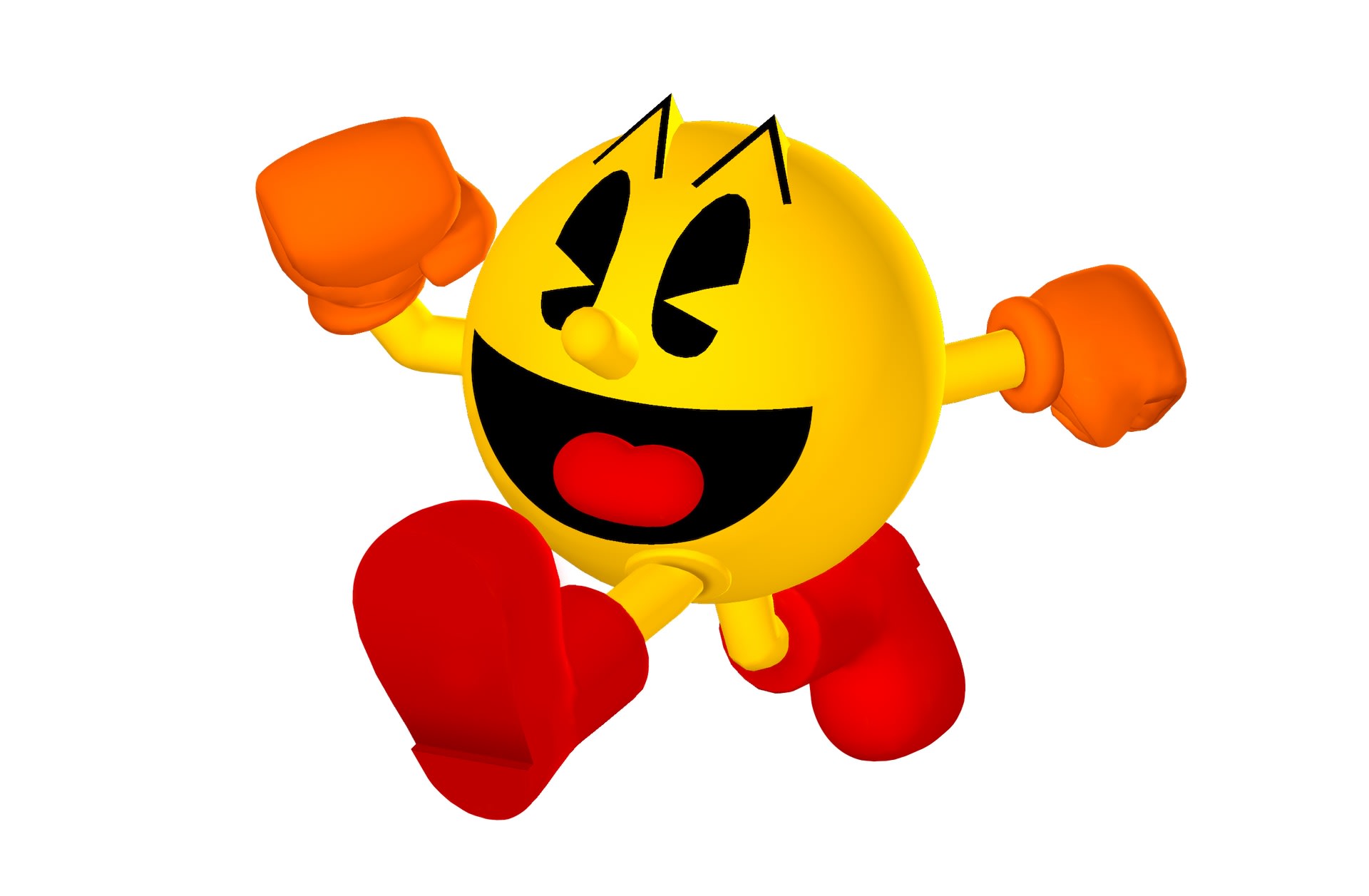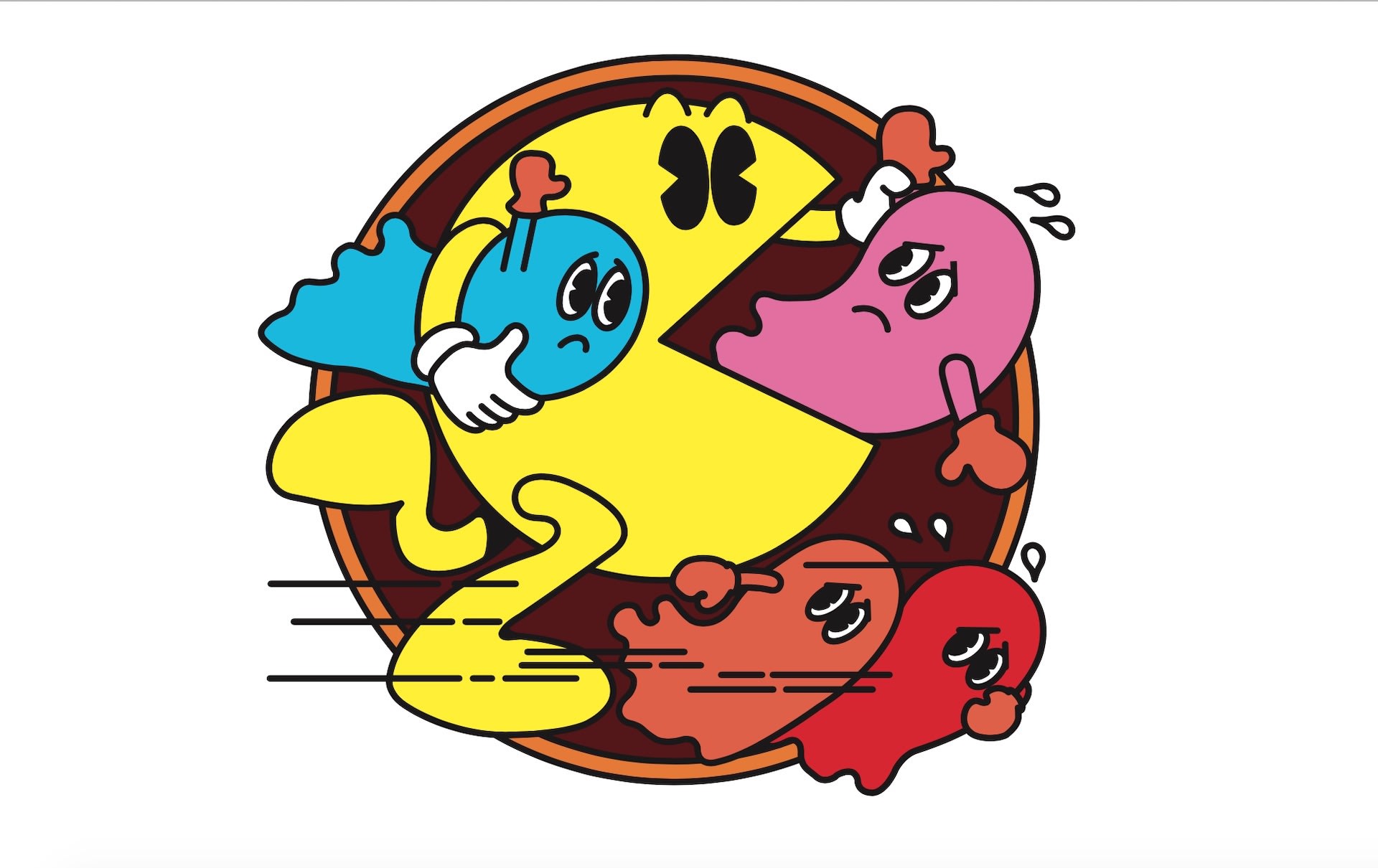Also influential was Popeye the Sailor Man. Not because of how he looked, but because of his use of spinach. In the cartoons, Popeye is overpowered by his enemy Bluto, but spinach gives him super strength.
This would inform the 'power pellets' in the Pac-Man games. Eat those and you turn the tables on the ghosts.
4. Build a 'fair' game
The space war games popular before Pac-Man were difficult to play for non-gamers, 'relentless' even in that they punished you for mistakes. Together with programmer Shigeo Funaki, Toru Iwatani from the start looked for a more forgiving and 'fairer' design.
And so a lot of things happen that a player may not notice at first sight. Start a new game, and the ghosts will leave the 'ghost pen' in the middle of the playfield.
But instead of directly hunting down Pac-Man, they first
move away from the player, and only start their chase after the player has eaten a dozen pellets (called 'esa' or 'foods' in Japanese).
Why? This gives novice players the opportunity to get used to the shape of the maze, his task of clearing the field of pellets, and get used to the joystick controls.
Later, the ghosts will of course try to grab you, but not all the time. Their programming gives them three sets of 'behaviour', called 'chase mode', 'scatter mode' and 'frightened mode'.
Chase mode happens when the ghosts are in pursuit. After a while though, they seem to tire and retreat to their designated corners - they 'scatter'. And when Pac-Man eats a power pellet, the ghosts turn blue and scramble, obviously frightened of Pac-Man's sudden strength.
In combination, the three modes do two things. They give the players some respite every once in a while, some time to recuperate and not feel stressed every playing second. A feature that favors inexperienced players - like the girls and women players Iwatani hoped would play the game.
Also, importantly, the game feels inherently fair. A game where the enemies turn around often and let you eat pellets doesn't feel like it wants to punish you for your mistakes or rip quarters out of your pockets.
This makes Pac-Man a more 'friendly' game than many others, and a more 'casual' or leisurely experience than Defenders, Asteroids or Space Invaders had to offer. In short: more fun for more people!
Want to learn more about Pac-Man? PAC-MAN: Birth of an Icon is the first-ever book on our yellow friend. Find your copy by clicking the link!




